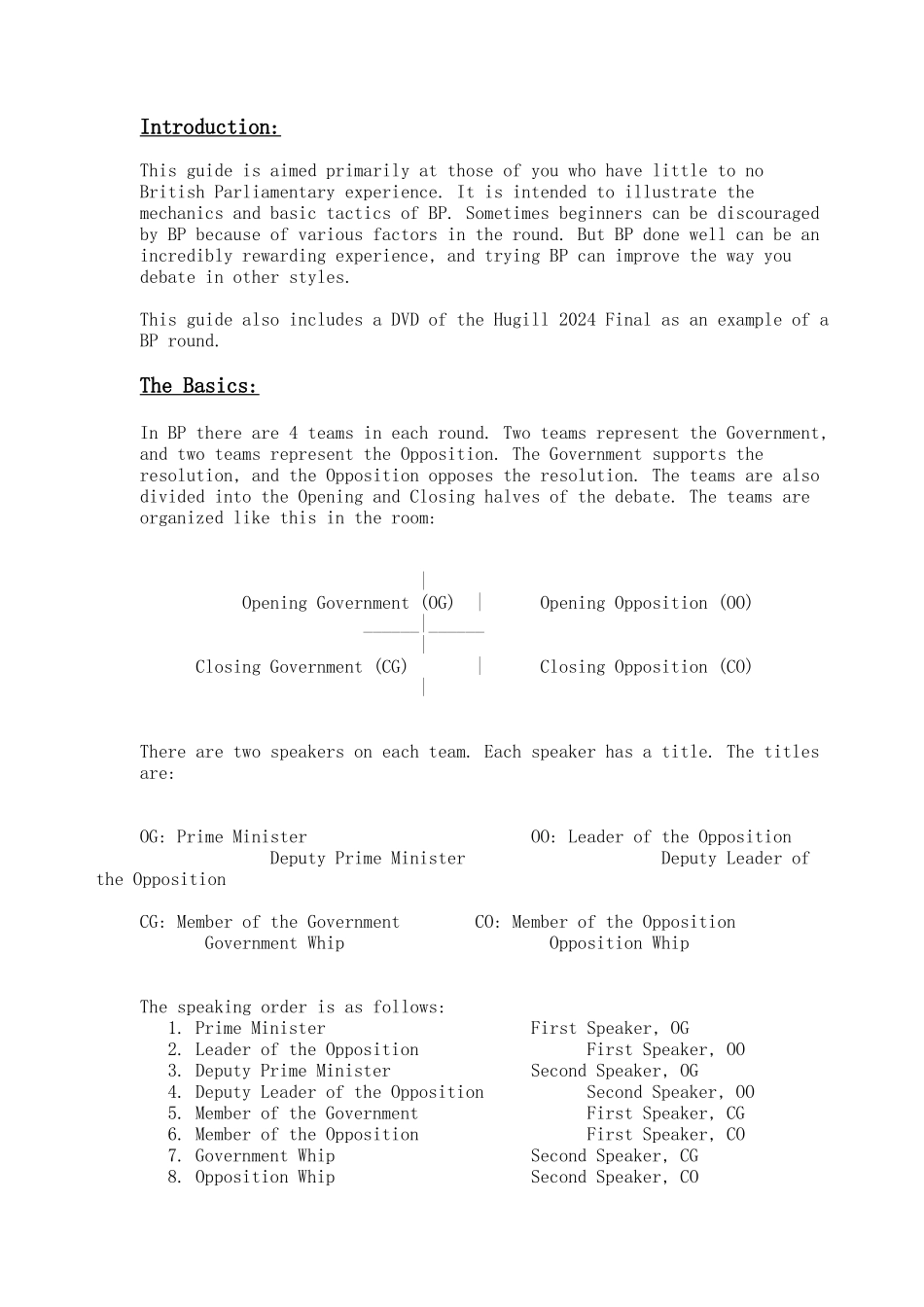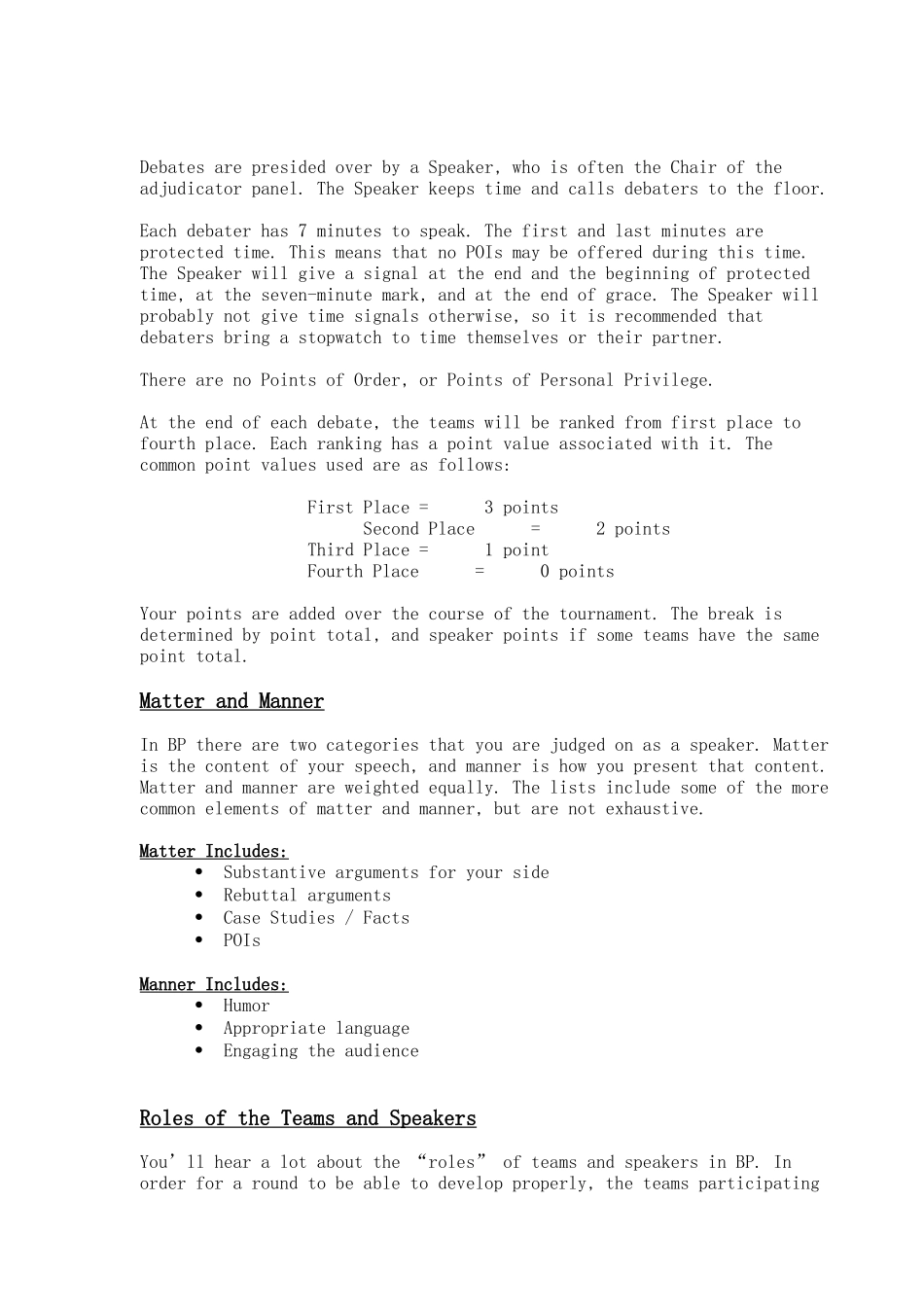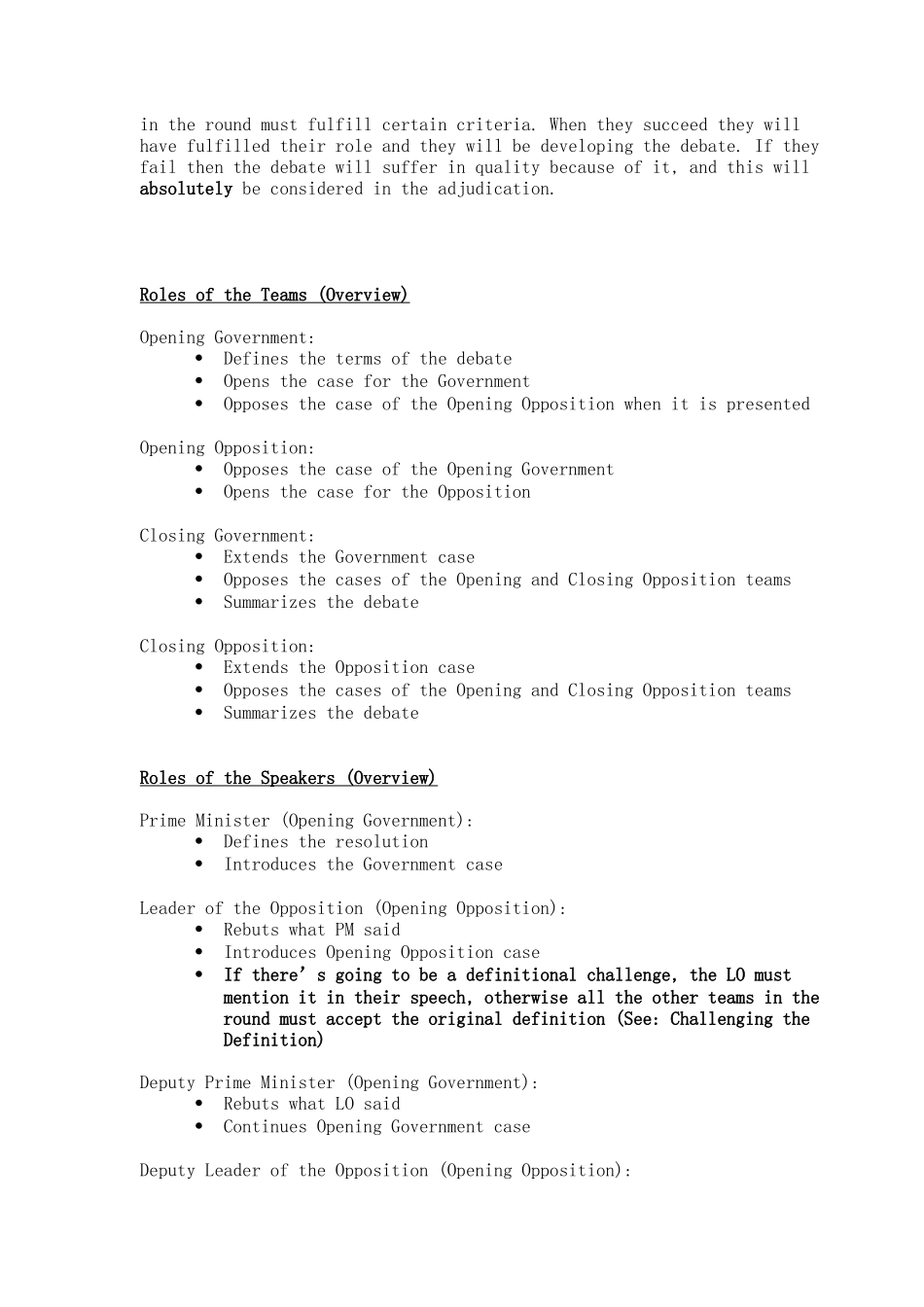Introduction:This guide is aimed primarily at those of you who have little to no British Parliamentary experience. It is intended to illustrate the mechanics and basic tactics of BP. Sometimes beginners can be discouraged by BP because of various factors in the round. But BP done well can be an incredibly rewarding experience, and trying BP can improve the way you debate in other styles. This guide also includes a DVD of the Hugill 2024 Final as an example of a BP round.The Basics:In BP there are 4 teams in each round. Two teams represent the Government, and two teams represent the Opposition. The Government supports the resolution, and the Opposition opposes the resolution. The teams are also divided into the Opening and Closing halves of the debate. The teams are organized like this in the room:| Opening Government (OG)| Opening Opposition (OO)______|______|Closing Government (CG) | Closing Opposition (CO)|There are two speakers on each team. Each speaker has a title. The titles are:OG: Prime MinisterOO: Leader of the Opposition Deputy Prime Minister Deputy Leader of the Opposition CG: Member of the GovernmentCO: Member of the Opposition Government Whip Opposition WhipThe speaking order is as follows:1. Prime Minister First Speaker, OG2. Leader of the Opposition First Speaker, OO3. Deputy Prime Minister Second Speaker, OG4. Deputy Leader of the Opposition Second Speaker, OO5. Member of the Government First Speaker, CG6. Member of the Opposition First Speaker, CO7. Government Whip Second Speaker, CG8. Opposition WhipSecond Speaker, CODebates are presided over by a Speaker, who is often the Chair of the adjudicator panel. The Speaker keeps time and calls debaters to the floor.Each debater has 7 m...


